Conference Touts Historic Preservation
Conference at We Energies offers experts touting the huge environmental payoff for historic reuse of buildings.

The We Energies public service building which was the hub of the interurban network.Photo by Jeramey Jannene.
California’s governor Jerry Brown signed into law a bill banning plastic bags in the state this year. The move would cut the state’s landfill accumulations by three percent.
“But construction debris consists of 20 percent of California’s landfills,” Donovan Rypkema, principal of PlaceEconomics, a Washington D.C. based real estate and economic development consulting firm told an audience of 200 Wednesday evening. “Historic preservation has appropriately been called the ultimate in recycling,” a Rypkema study has noted. New construction creates four to seven times the debris of remodeling.
Historic preservation could play a “catalytic role” in the greening of America, he added.
Historic Building Reuse: A Catalyst for Revitalizing Neighborhoods, was the third of ten planned discussions of the many facets of historic preservation and redevelopment. The event was hosted by the Milwaukee Preservation Alliance and the Historic Preservation Institute of the UWM School of Architecture and Urban Planning.
Professor Matthew Jarosz was the host of the evening’s events, and told Urban Milwaukee before the program that Rypkema was a “nationally and even internationally known speaker about research that demonstrates how catalytic and powerful retaining historic buildings is. It is a very important tool.”
Rypkema, in his address, said officials should include a jobs component in calculating the costs and benefits of historic reuse, and that rehabilitation can save impoverished neighborhoods as well as provide jobs for residents.
He also was critical of proposals for wholesale demolition of abandoned properties: “Whenever you tear down an existing house you are removing a unit of affordable housing,” he said, adding that it is not economically possible to build new housing that is as affordable.
Rick James of WE Energies talked about the history of the grand building, a four story structure “with enough steel in it to support another eight stories.” A 1920’s “remuddling” had led to the loss of many of the building’s features, which have been restored in recent years. At one time, it was the busiest interurban train station in the nation, when domestic electricity was just a side business for The Milwaukee Electric Railway & Light Co.
Ald. Jose Perez, a panelist, suggested a clearer picture of the historic preservation process would be of benefit to the city. His south side district largely predates the city’s zoning code, and is rich in old structures that need redevelopment, as well as an integrated approach to it.
Fellow Ald. Robert Bauman suggested that a historic district for the North Side might be a catalyst to develop that area rich in worker and middle class housing. Randy Crump, an attendee had mentioned that while his N. Sherman Blvd. neighborhood was doing well, he was concerned about things on N. 42nd St., just a block away.
Bauman said that 25 years ago there was “no market for homeowners” in much of his district. “On West State street, 21 of 31 homes were rooming houses. Now there are none.”
Of course, this preservation which returned homes like that of House Confidential honoree Charlie Fox into single- or two-family status did impact some poor folks.
“Low income people were kicked out of rooming houses, no doubt about it,” Bauman said. “But we replaced a house with 25 people with one with three people,” — leading to a more stable and less chaotic neighborhood.
Rypkema agreed that “rehabilitation breeds more rehabilitation,” and that one “small job” could add millions of dollars of additional development.
Historic Tax credits also account for a significant multiplier, he noted: “$200,000 in credits equals $1 million in investment.”
Catering for the reception held before the event was by Zilli.
Photos from the Event
If you think stories like this are important, become a member of Urban Milwaukee and help support real, independent journalism. Plus you get some cool added benefits.
Political Contributions Tracker
Displaying political contributions between people mentioned in this story. Learn more.
- October 13, 2019 - Robert Bauman received $100 from Patti Keating Kahn
- October 12, 2019 - Robert Bauman received $150 from David Uihlein
- December 13, 2018 - José G. Pérez received $100 from Carl Mueller
- November 12, 2018 - Robert Bauman received $50 from Jeff Bentoff
- March 23, 2017 - Robert Bauman received $250 from Patti Keating Kahn
- March 22, 2017 - Robert Bauman received $25 from Charlie Fox
- March 20, 2017 - Robert Bauman received $250 from David Uihlein
- December 6, 2016 - José G. Pérez received $50 from Randy Crump
- June 28, 2016 - José G. Pérez received $50 from Jeff Bentoff
- June 27, 2016 - José G. Pérez received $100 from Carl Mueller
- May 10, 2016 - Robert Bauman received $250 from Patti Keating Kahn
- February 11, 2016 - Robert Bauman received $50 from Charlie Fox
- February 10, 2016 - Robert Bauman received $200 from David Uihlein
- December 7, 2015 - José G. Pérez received $100 from Carl Mueller
- November 19, 2015 - Robert Bauman received $200 from Carl Mueller
- November 15, 2015 - Robert Bauman received $100 from Jeff Bentoff
- October 26, 2015 - José G. Pérez received $50 from Randy Crump
- May 5, 2015 - José G. Pérez received $100 from Carl Mueller
- March 27, 2015 - Robert Bauman received $50 from David Uihlein
- March 27, 2015 - Robert Bauman received $100 from Carl Mueller
- March 21, 2015 - Robert Bauman received $50 from Laura Lee Ricci
- March 14, 2015 - Robert Bauman received $100 from Jeff Bentoff
- November 12, 2014 - José G. Pérez received $150 from Carl Mueller
- September 13, 2014 - Robert Bauman received $50 from Jeff Bentoff
- September 11, 2014 - Robert Bauman received $100 from Carl Mueller
- September 4, 2014 - Robert Bauman received $150 from Paul Jakubovich
- July 30, 2014 - Robert Bauman received $200 from David Uihlein


![Bob Greenstreet [m]. Bob Greenstreet [m].](https://urbanmilwaukee.com/wp-content/gallery/kilbourn-town/thumbs/thumbs_img_3420_0.jpg)
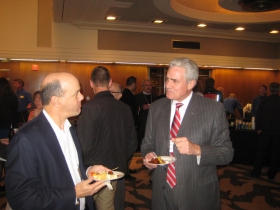
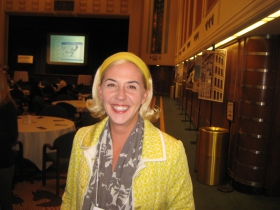
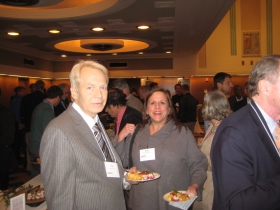
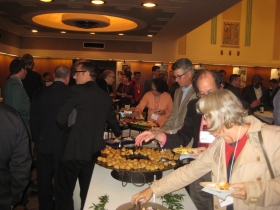
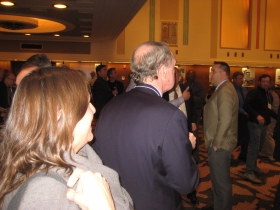




















Too bad the renovation of that building didn’t include restoration of their electric appliances store. It was their early marketing to help promote electricity and the store also promoted energy saving appliances as late as the 1980s (at least to ther employees in the later years). They could be promoting solar panels and other solar energy products today.